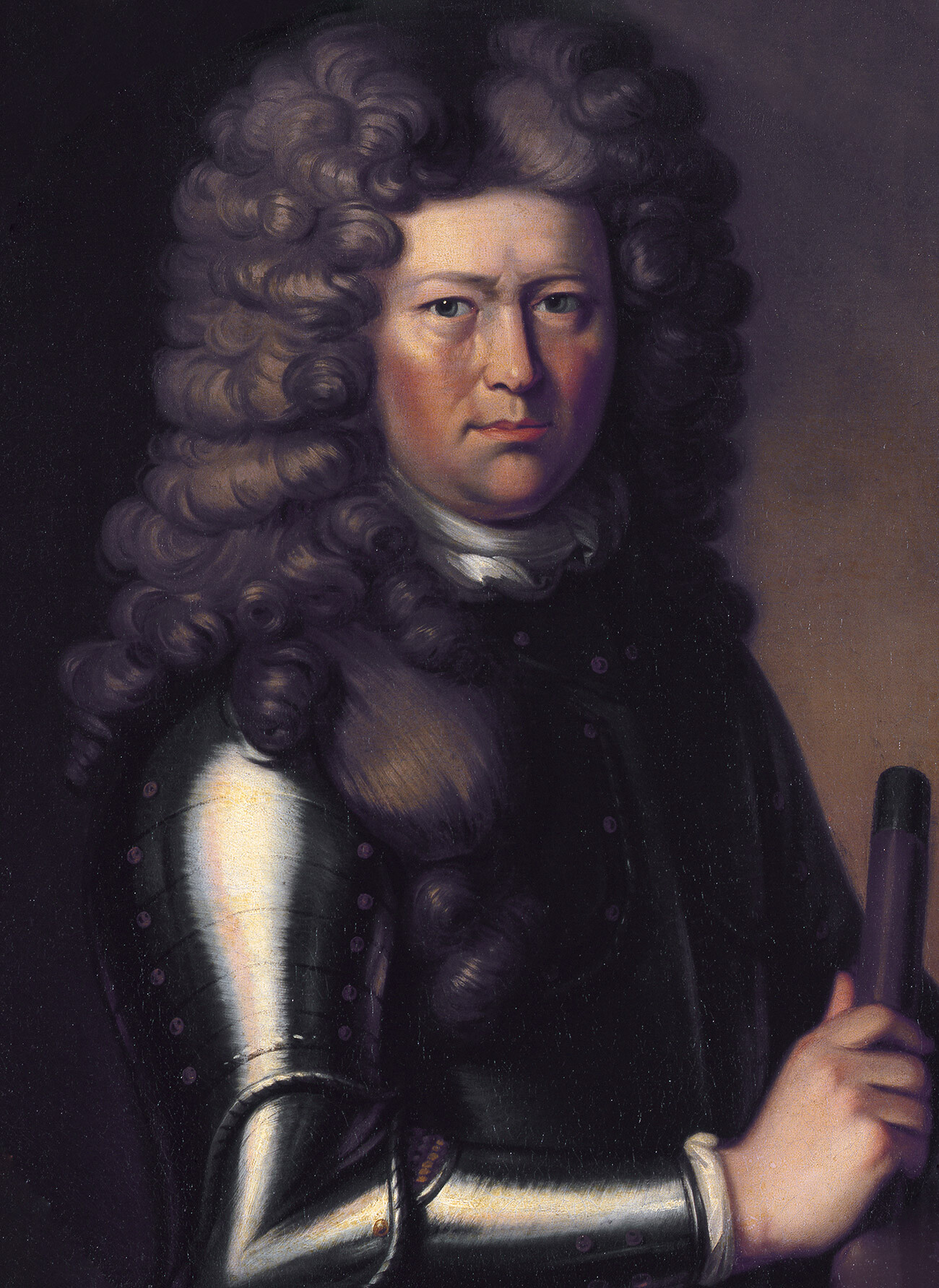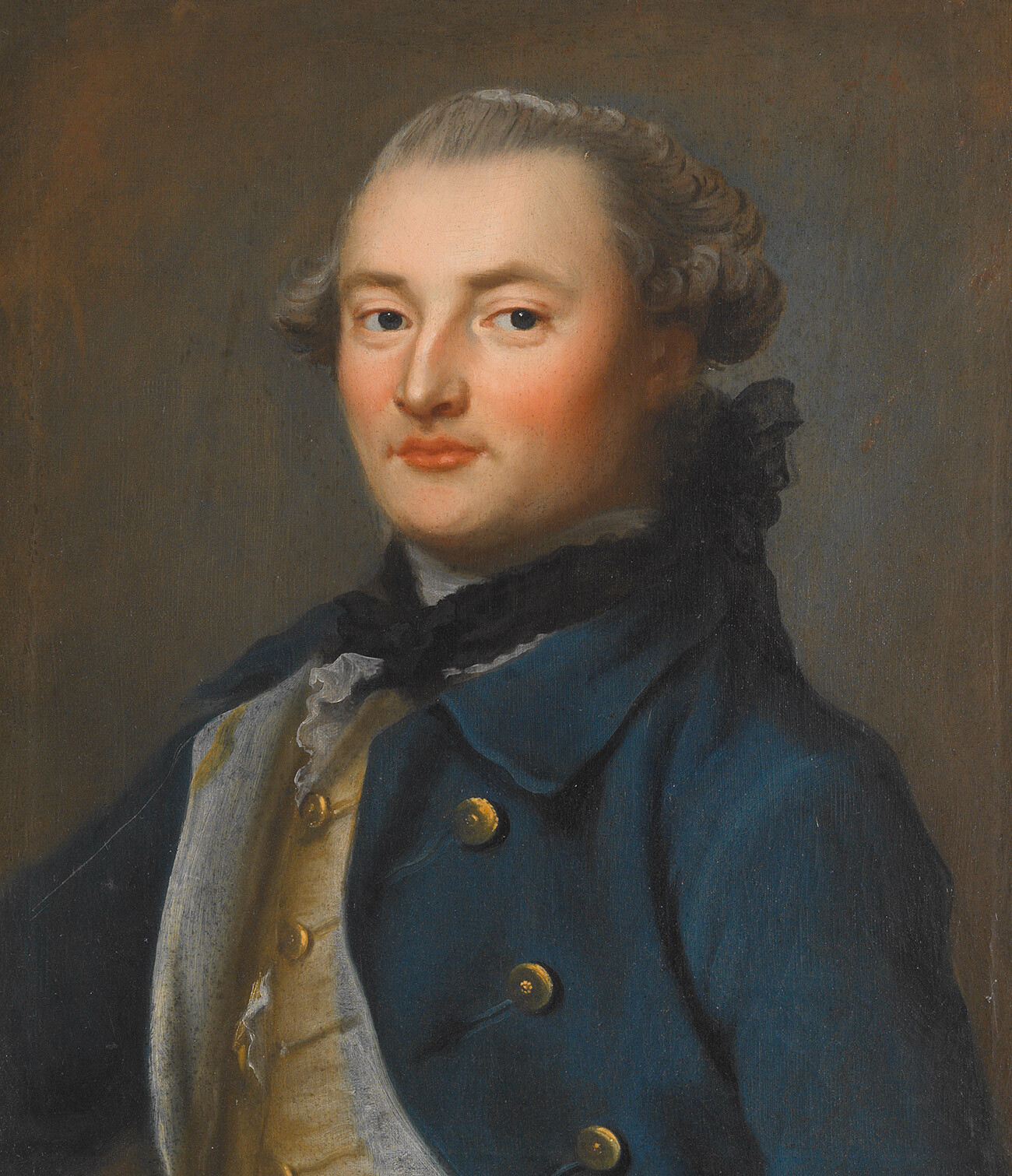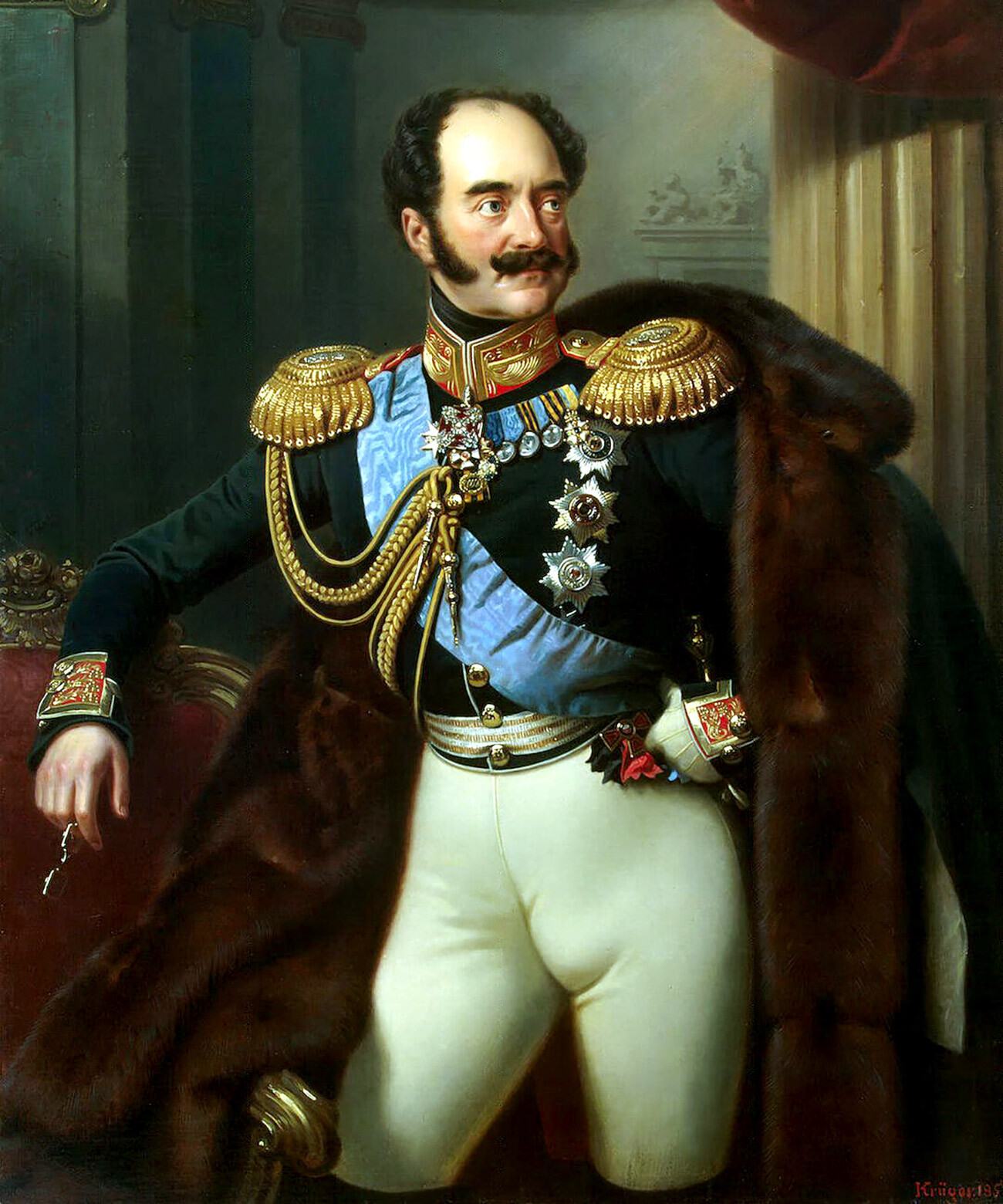

Cornelius Cruys.
Public DomainAt the end of the 17th century, Tsar Peter the Great set about building a navy and began extensively to engage foreign specialists in this ambitious undertaking. One of them was Cornelius Cruys (Norwegian: Niels Creutz), who hailed from the city of Stavanger in Norway. The experienced seafarer who, in his own words, managed to serve six monarchs and three republics during his lifetime, entered Russian service in 1698.
In Russia, the ambitious captain rose to the rank of admiral and essentially became one of the founding fathers of the Russian fleet. He was directly involved in the drafting of naval legislation and basic documents regulating naval service. And, in St. Petersburg, which was founded on the shores of the Gulf of Finland in 1703, the Admiralty Building, shipyards, defensive structures and various factories to meet the needs of the naval forces were built with his direct participation.
“A very competent person with a lot of achievements to show for himself… Without such a man, our fleet wouldn’t be in a good state,” Fyodor Golovin, another of the tsar’s close associates, said of Cruys. In 1705, the Norwegian became the first commander of the Russian Baltic Fleet, which he successfully deployed to protect the future Russian capital from the Swedes.
Eight years later, there was an episode in the life of Kornely Ivanovich, as Cruys was known in Russia, that almost cost him his life. A squadron under his command let the enemy slip through its fingers near Reval (now Tallinn) and one of the ships ran aground in the course of an unsuccessful pursuit and was ordered to be burned. For this blunder, Cruys was sentenced to death, which was then replaced with exile to Kazan.
In 1715, the Norwegian was pardoned; he returned to service, but Cruys didn't get back any of the awards that had been bestowed on him. They were returned to the elderly admiral only after the death of Peter the Great by Empress Catherine I in 1725.

Vitus Bering.
The Institute of Archaeology of the Russian Academy of SciencesDuring a visit to the Netherlands in 1704, Cornelius Cruys managed to recruit about a hundred officers and sailors into Russian service. One of them was Dane Vitus Jonassen Bering, a young graduate of the Amsterdam Sea Cadet Corps.
In the ranks of the Russian navy, Bering participated in wars against the Ottoman Empire and Sweden, but he was destined to go down in history not as a military man, but as an explorer. In 1724, Peter the Great decided to organize an expedition to Kamchatka and Vitus (or Ivan Ivanovich, as he came to be known in Russia), who had served on Danish whalers in the North Atlantic, was the perfect candidate to lead it.
During the First Kamchatka Expedition, which lasted from 1725 to 1730, vast sections of the Kamchatka and Chukotka coast were explored and 3,500 km of the western coast of what would later be named the Bering Sea were mapped. The strait between Asia and North America, through which the Dane's ships passed in 1728, would also bear the name of the seafarer.
In 1740, Ivan Ivanovich led the Second Kamchatka Expedition, during which the coasts of Alaska and the Aleutian Islands were explored. Bering, who was already about 60 years old by that time, didn’t live to see the completion of the voyage. He died of scurvy on December 19, 1741, on one of the Commander Islands, which would subsequently also be named after him.

Georg Magnus Sprengtporten.
Public DomainUntil 1780, Georg Magnus Sprengtporten, a native of the town of Borgå (Porvoo in Finland), pursued a brilliant military career in Sweden. He rose to the rank of colonel and, at various times, commanded infantry formations and elite Light Dragoon units.
Sprengtporten longed to be put in command of all the Swedish troops in his native Finland, but palace intrigues not only prevented him from achieving his aim, but also soured his relations with King Gustav III, who had at one time granted him the title of baron.
Georg Magnus was forced to resign and leave the Kingdom. He then fundamentally changed his political convictions and began to advocate the complete separation of Finland from Sweden and its transfer to the patronage of the Russian Empire.
The plan presented by him attracted the interest of Catherine the Great, who invited him to enter the service of Russia. In the course of the 1788-1790 war against Sweden, Major-General Sprengtporten of the Russian army carried out propaganda work among the Finnish population, drew up military campaign plans and participated in battles himself. In February 1790, the Swedes sentenced him to death in absentia for treason.
Egor Maximovich’s (this is how Sprengtporten came to be known in Russia) dream came true in 1809, when, following the final war in the history of the two states, Finland came under the rule of Tsar Alexander I of Russia. The monarch heeded the arguments of the Swede in favor of granting widespread autonomy to the annexed region and even made him the first governor-general of Finland.
The following words, in French and Russian, were inscribed on the funerary monument of Egor Maximovich, who died in 1819 and was buried in St. Petersburg’s Smolenskoye Lutheran Cemetery: “With his talents and his service, he earned the confidence and special benevolence of three sovereign rulers of Russia. Catherine II and Paul I gave the most complimentary demonstrations of this. Sovereign Emperor Alexander Pavlovich honored his memory and, after his decease, bestowed his munificence on his inconsolable widow, who lives in the hope of being reunited with her spouse, friend and benefactor.”

Eduard Ferdinand Woldemar von Adlerberg.
Public DomainEduard Ferdinand von Adleberg - son of Gustav Friedrich von Adlerberg, a Swedish colonel who had entered Russian service - was extremely lucky in life, as he could count Emperor Nicholas I himself among his friends. This friendship was made possible by the fact that his mother, Julia Baggehufwudt, was descended from ancient Norwegian nobility and served at Court as the future tsar’s governess.
During the reign of Nicholas’s elder brother Emperor Alexander I, Adleberg, as a member of the Lithuanian Life Guard Regiment, had taken part in the Patriotic War of 1812 and the Russian army’s subsequent foreign campaign, particularly distinguishing himself in the battles of Borodino, Lützen and Bautzen.
After Nicholas ascended the Russian throne in 1825, Vladimir Fyodorovich (the Russified version of Eduard Ferdinand's name) was invariably in the emperor’s entourage and was one of his most trusted confidants. He accompanied the monarch on all his trips, performing the functions of chief of the field chancellery. “I have loved Adjutant-General Adlerberg as if he were my own brother,” the monarch asserted.
In addition, Vladimir Fyodorovich was in charge of the Post Office for 15 years, substantially improving the effectiveness of the department assigned to him. It was under him that postage stamps were first introduced in the Russian Empire.
Adlerberg continued to enjoy the favor of the Imperial authorities during the reign of Nicholas I’s son, Alexander II. “With you he had no innermost secrets, with you he shared both joy and grief,” the new Emperor told Vladimir Fyodorovich after coming to the throne in 1855, referring to his father. “His pure and splendid soul could not fail to appreciate your exalted qualities and, loving you as a person, he rejoiced that he had discovered a friend in one of his subjects…”

Vladimir Dahl.
Vasily PerovVladimir Dahl devoted his entire life to the study of Russian folklore and the vernacular (spoken, non-literary) language, notching up remarkable achievements in this field. It is noteworthy that the researcher himself was the son of a Danish doctor and his German wife who had both settled in Russia.
After receiving an excellent education (each of Dahl’s parents was fluent in five languages), Vladimir Ivanovich tried out various different professions: He embarked on a military career and worked as a surgeon and as an official for special assignments. Wherever he found himself in the course of his extended journeyings around the vast empire, he made a point of learning about the local culture and noted and recorded a wide range of vernacular words, which were sometimes only prevalent in specific regions of the country.
"Sitting in one place, in the capital city, it is impossible to learn Russian and nowhere is this more so than sitting in St. Petersburg,” Dahl believed. “It is an impossible task. Our writers need occasionally to take a breath of fresh air in the provinces and listen closely to what is to the left and right of them.”
Many years of work culminated in the publication under Dahl’s authorship of the ‘Explanatory Dictionary of the Living Great Russian Language’, consisting of roughly 200,000 words and 30,000 sayings. The work, which Vladimir Ivanovich continuously updated right up to his death in 1872, offers a wide-ranging insight into the lives and everyday circumstances of the Russian people in the 19th century.
In addition, Vladimir Dahl’s legacy includes a rich seam of folk tales and songs collected by him and also a vast collection of lubok popular prints, which he bequeathed to the Imperial Public Library.
If using any of Russia Beyond's content, partly or in full, always provide an active hyperlink to the original material.
Subscribe
to our newsletter!
Get the week's best stories straight to your inbox